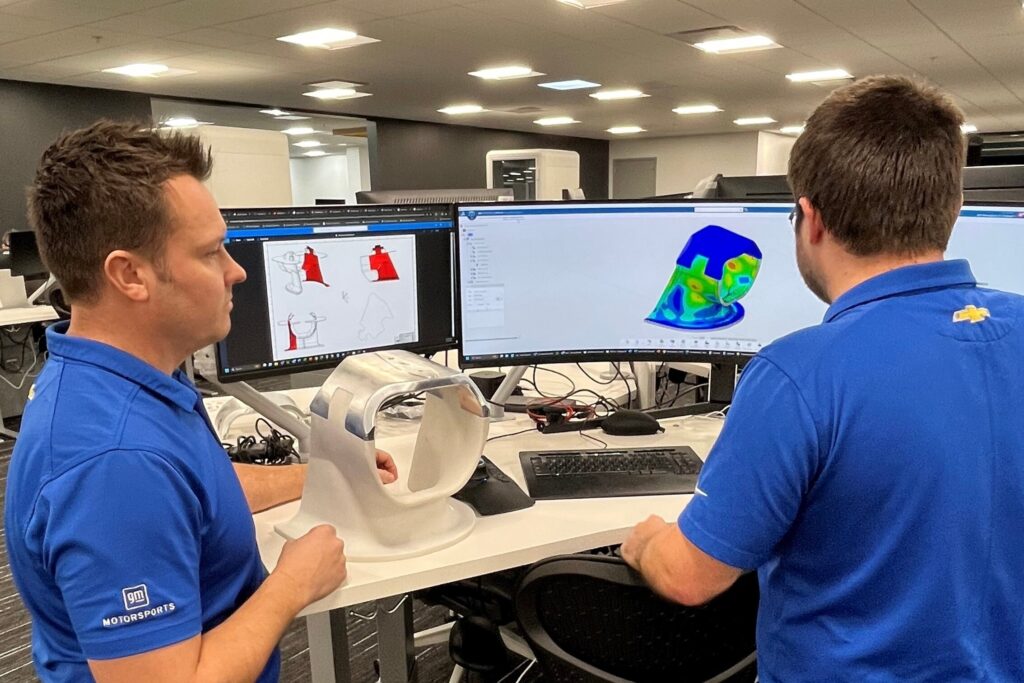Yesterday an article in The Athletic described the preparations Andretti Global is making on their Formula One team. They have around 120 people working for the team already and have a 60% model running in Toyota’s wind tunnel in Cologne, Germany. The team has also set-up a facility at Silverstone (UK) and is getting ready to move into a new HQ near Indianapolis (US). They are actively working on designing and manufacturing parts as well as running CFD simulations. Engine partner Cadillac (GM) is also working on their power unit and associated systems. What’s evident is that this team has been busy creating the foundation for a serious operation once they enter Formula One.

That last phrase is important because while the FIA (sanctioning body) approved their entry last October, FOM (commercial rights holder) has not. This means that for now, they aren’t able to officially join F1. In the meantime, Andretti Global continues it’s preparations to enter in either 2025 or 2026. No doubt they will continue to hire more people and build-out their facilities this year. After all, the plan is to have a full-size car ready later this year.
This is going to put FOM in an uncomfortable position. The ten teams currently in F1 don’t want another team on the grid. Most of the opposition comes down to money, they would have to split revenue between eleven teams rather than ten. Several Team Principals also don’t believe that an additional entry is necessary and having a new one would weaken the teams at the back of the grid. All this despite a $200 million anti-dilution fee that Andretti Global would need to pay the teams before it officially joins the grid.
The FIA will claim that it is following it’s rules regarding new entries to the sport, the ones that are part of the last Concorde Agreement signed by the FIA and FOM. They did their due diligence and made the prospective entries submit supporting documentation with their proposal. It was a long and thorough process because nobody wanted a repeat of what happened during the last expansion. During that time four teams were set to join the grid; of the three that joined (HRT, Caterham, and Manor) all folded within seven years.
For a while, the thinking was that having ten healthy teams was better than having thirteen teams where half of those were struggling to survive. With the revenue model of the past, that might have been true. After all, MotoGP went through a similar experience in the wake of the 2008 Global Financial crisis where many of the non-factory teams were struggling to pay their bills. But with the new revenue model combined with more income overall, this mindset is outdated.
F1 is growing and becoming even more popular than before, especially in the United States. For decades, F1 was a niche sport in the USA. There were races, some American drivers, even a few US teams; but it never had the widespread popularity that Stock Car and IndyCar racing had. Satellite and later Cable TV helped expand the audience but until recently, it was still overshadowed by other forms of motorsport. After Liberty Media purchased the commercial rights to Formula One from CVC Capital and Bernie Ecclestone in 2017, things began to change.
Formula One Management (FOM) began to revamp how the sport was presented to audiences worldwide. They improved broadcasts and began an official streaming service, akin to what other sports league have done recently. They also (finally) got serious about social media and understanding the different audience segments. This led to greater engagement and more ways to bring in both new fans and offer additional content to current ones. The result was more revenue for everyone involved and increased demand for the sport.
Now every team is now worth at least $700 million, several are over $1 billion. Teams are now on solid financial footing, nobody is in danger of collapsing and exiting the sport. There is a degree of stability heretofore unseen in Formula One, which is a far cry from less than a decade ago. Just in the last five years even successful teams like McLaren and Williams have been at risk, not to mention Sauber’s and Team Enstone’s (currently Alpine) multiple near-death experiences. Big-name sponsors, partners, and manufacturers (i.e., Ford and VW/Audi) are coming in too. Heady days indeed.
So why oppose Andretti Global at this stage? Yes, money is a consideration but with expanding revenues it isn’t likely to make a big impact. The cost cap ensures that teams can’t spend themselves into oblivion like they did in the past. It could be a combination of cliquishness and fear that has compelled all then teams to close ranks to keep the Andretti’s out. Think about it, what happens if Andretti Global is competitive soon after entering F1? Would they upstage Haas and Sauber before challenging Williams and VCARB? Could initial engine supplier Renault see their Alpine F1 team behind the Andretti’s in a season or two? Behind all the bluster, there may well be fear that Andretti Global could make the current teams look bad.
That fear might be justified too. The Andrettis have created quite a stable of teams across multiple series. All of them appear to be well-run, financially solid, and competitive. These aren’t a bunch of dilettantes simply looking to make a splash and gain notoriety. The Andrettis mean business and their track record demonstrates that they can succeed in the competitive world of motorsports. This doesn’t mean that they will succeed, but they have conclusively demonstrated their desire to compete by putting the pieces in place to do so. Formula One is their ultimate goal and they are taking steps to enter the sport despite not having FOM’s approval.
It’s bold but represents a clear statement of intent.
ADDENDUM: Lawrence shares his thoughts on the matter in this video:

